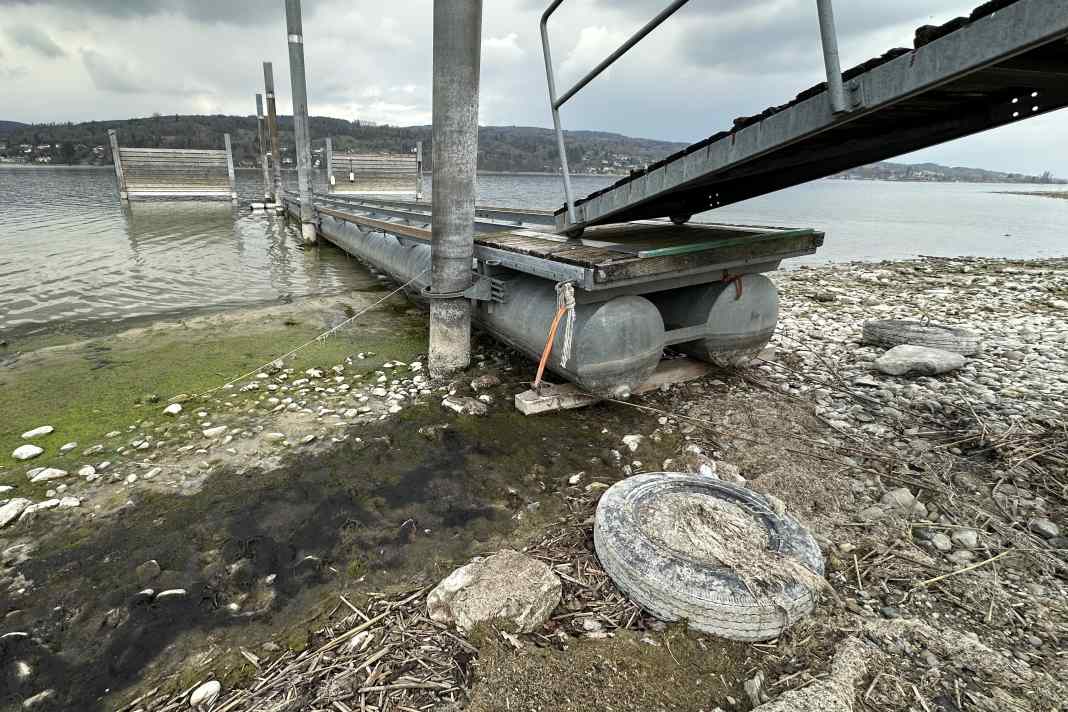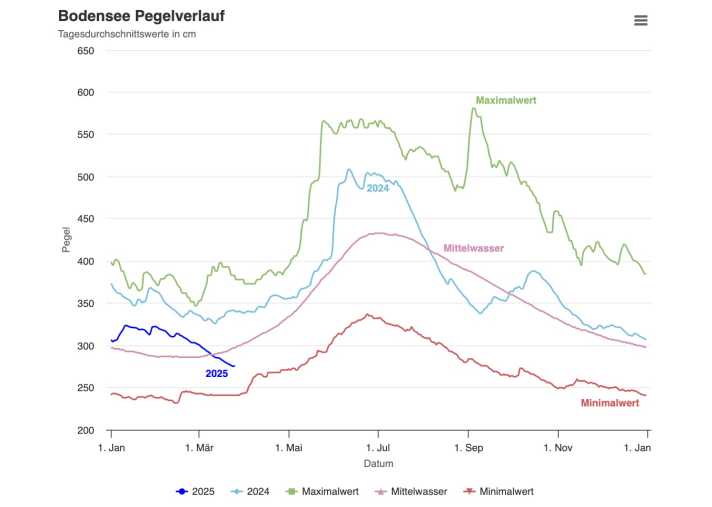




Spring is showing its friendly and sunny side on Lake Constance so far. But on the "Swabian Sea", the joy is clouded. The persistent drought and the high number of hours of sunshine have taken their toll on the water level on Lake Constance in recent weeks. The water level in Constance is currently only 2.75 metres - an alarmingly low level for this time of year. This is 15 centimetres below the long-term average and even 61 centimetres less than in the previous year 2024. Weather and climate experts warn that the level is already approaching the absolute minimum value.
The forecasts for the coming days do not promise any lasting improvement either. According to the meteorologists, a prolonged period of rain with lots of precipitation is not on the cards. In addition, there is little snow in the mountains and hardly any in the Rhine catchment area. The excessively high temperatures in March have ensured that a lot of the snow has simply evaporated. According to experts, the snowmelt this year will therefore be significantly less than in recent years. This means that hopes of the situation on Lake Constance easing soon are fading rapidly.
Water sports enthusiasts on dry land
Water sports enthusiasts on Lake Constance are affected, especially sailors who are unable to call at their home harbours due to their draughts and therefore have to wait to launch their boats. This in turn puts a strain on many shipyards on Lake Constance because they are unable to keep to their already tight schedule for launching in the spring. How long the situation will last is written in the stars.

In addition to the low water level, another problem is causing headaches on Lake Constance: the annual mixing of the water is not taking place. The Institute for Lake Research in Langenargen assumes that the lake will not fully circulate this year either. Measurements at the beginning of March show that the water temperature down to a depth of 100 metres was around 5.8 degrees, while at a depth of 250 metres it was only slightly colder at 5.6 degrees. This small temperature difference is apparently not enough to trigger vertical circulation.
The lack of mixing has far-reaching consequences for the ecosystem of Lake Constance. These processes are important for the oxygen supply of the deep water, the experts explain. Without vertical circulation, the oxygen reserves in the deeper water layers are slowly depleted. This would have fatal consequences for the creatures at the bottom of the lake. The rather shallow Lower Lake, which reacts more sensitively to temperature changes, is particularly affected. In the long term, fish could die off due to a lack of oxygen.
Drinking water reservoir for five million people
Lake Constance contains an average of 50 billion cubic metres of water. This corresponds to around 20 times the annual drinking water consumption of the whole of Germany. This makes Lake Constance one of the largest natural water reservoirs in Europe. And; Lake Constance is one of the few inland waters in Europe with a free inflow and outflow. This means that the water level cannot be regulated.
Around five million people in Germany, Austria and Switzerland obtain their drinking water directly from Lake Constance through an extensive supply network. Every year, around 175 million cubic metres of water are withdrawn from the lake in this way. Lake Constance has an area of around 570 square kilometres. For the water level in Constance to rise by one centimetre, 5.7 million cubic metres of water are required. This corresponds to a volume of around 2,200 Olympic swimming pools.
